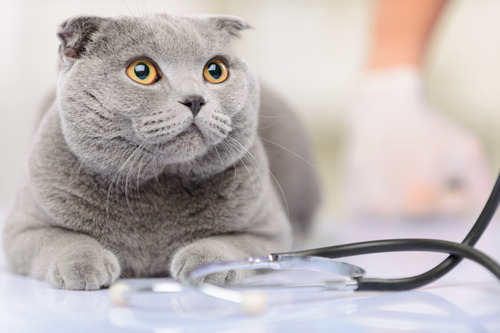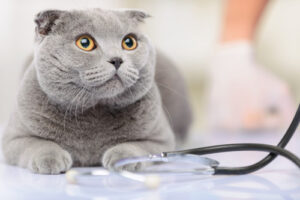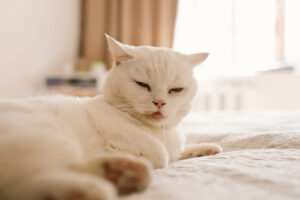Feline hyperesthesia is a fascinating yet perplexing condition that affects many cats. Also known as “twitch-skin syndrome” or “rolling skin syndrome,” this disorder can cause sudden episodes of erratic behavior, such as skin rippling, excessive grooming, and apparent sensitivity to touch. If your cat has been displaying these unusual behaviors, it might be experiencing feline hyperesthesia. While this condition can seem alarming, understanding it can help pet owners navigate the best care options. Let’s explore what feline hyperesthesia is, what causes it, and how it can be managed.
What Is Feline Hyperesthesia?
Feline hyperesthesia is a neurological condition characterized by episodes of abnormal skin and muscle reactions. These episodes often occur sporadically and may include symptoms such as twitching skin, sudden bouts of self-biting or licking, and erratic movements. Cats with feline hyperesthesia may seem distressed, hypersensitive, or even appear to hallucinate during these episodes.
The term “hyperesthesia” refers to an increased sensitivity to stimuli, which explains why some cats exhibit extreme reactions to touch or movement. During an episode, you may notice your cat’s skin rippling along its back, a stark change in behavior, or a sudden dash around the room. These symptoms typically last only a few minutes but can be unsettling for both the cat and its owner. While feline hyperesthesia may initially seem like a purely physical issue, it is often tied to the central nervous system, making it a complex condition to diagnose and treat.
Signs and Symptoms of Feline Hyperesthesia
Cats with feline hyperesthesia often exhibit a range of symptoms that can vary in severity. Common symptoms include:
- Skin rippling or twitching: This is one of the hallmark signs of feline hyperesthesia. You may notice the skin along your cat’s back moving involuntarily.
- Sudden bouts of grooming or biting: Cats may over-groom or bite themselves, particularly along their back or tail.
- Sensitivity to touch: Your cat may react strongly or negatively when touched, especially along its spine.
- Erratic behavior: This may include sudden bursts of running, jumping, or vocalizing for no apparent reason.
- Dilated pupils and twitching tail: These physical signs can occur during episodes of hyperesthesia.
While some of these behaviors may occasionally occur in healthy cats, frequent or intense episodes should be evaluated by your veterinarian.
Potential Causes of Feline Hyperesthesia
The exact cause of feline hyperesthesia is not fully understood, but several factors may contribute to this condition.
Neurological Factors
Feline hyperesthesia is believed to have a neurological basis, meaning it may stem from an issue within the cat’s brain or nervous system. Conditions such as seizures, nerve damage, or abnormal electrical activity in the brain could trigger episodes.
Behavioral and Environmental Stress
Cats are highly sensitive creatures, and changes in their environment—such as a new pet, moving to a new home, or loud noises—can lead to heightened anxiety and, potentially, hyperesthesia episodes.
Underlying Medical Conditions
Certain medical issues, including skin disorders, allergies, or pain in the spine, may mimic or contribute to feline hyperesthesia symptoms. For this reason, a thorough veterinary examination is essential to rule out other health concerns.
How Is Feline Hyperesthesia Diagnosed?
Diagnosing feline hyperesthesia requires a careful and methodical approach. Because this condition shares symptoms with other medical and behavioral issues, your veterinarian will need to conduct a thorough evaluation to rule out other causes.
Veterinary Examination
Your veterinarian will perform a physical exam to assess your cat’s overall health and identify any potential issues, such as skin infections, parasites, or injuries. A neurological exam may also be conducted to evaluate your cat’s reflexes and muscle responses.
Diagnostic Tests
Additional testing, such as blood work, skin scrapings, or imaging studies (like X-rays), may be necessary to rule out conditions such as allergies, spinal injuries, or seizures. These tests can help narrow down the potential causes of your cat’s symptoms.
Behavioral Assessment
Since stress and anxiety can play a significant role in feline hyperesthesia, your veterinarian may ask about any recent changes in your cat’s environment or behavior. Keeping a journal of your cat’s episodes, including their frequency and triggers, can provide valuable insight.
Can Feline Hyperesthesia Be Treated?
While there is no definitive cure for feline hyperesthesia, several treatment options can help manage symptoms and improve your cat’s quality of life. The approach often involves a combination of medical, behavioral, and environmental strategies tailored to your cat’s specific needs.
Medical Interventions
- Medications: In some cases, your veterinarian may prescribe anti-seizure medications, anti-anxiety drugs, or pain relievers to reduce symptoms. These medications can help regulate your cat’s nervous system and minimize discomfort.
- Topical treatments: If your cat has skin irritation or allergies contributing to its symptoms, your veterinarian may recommend topical solutions or medicated shampoos.
Behavioral and Environmental Changes
- Stress reduction: Creating a calm and predictable environment can help alleviate stress. This may include providing a quiet space for your cat, using pheromone diffusers, or maintaining a consistent routine.
- Enrichment activities: Toys, scratching posts, and interactive playtime can help redirect your cat’s energy and reduce anxiety.
- Dietary adjustments: In some cases, dietary changes or supplements, such as omega-3 fatty acids, may support your cat’s overall health and reduce symptoms.
Preventing Episodes and Long-Term Management
Long-term management of feline hyperesthesia often involves a combination of ongoing care and monitoring. Here are some tips to help minimize episodes and keep your cat comfortable:
- Identify and avoid potential stressors that may exacerbate your cat’s symptoms.
- Schedule routine wellness appointments to monitor your cat’s condition and adjust its treatment plan as needed.
- Interactive toys and puzzle feeders can help keep your cat’s mind engaged and reduce anxiety.
- Keep track of any changes in your cat’s behavior or symptoms and report them to your veterinarian.
How to Seek Help for Feline Hyperesthesia
Feline hyperesthesia can be a challenging condition to navigate, but with the right approach, you can help your cat lead a happy and comfortable life. If your cat is showing signs of feline hyperesthesia, consult with your veterinarian. Triangle Animal Clinic in Conroe, TX, is dedicated to providing compassionate care for your pet. Call us at (936) 756-3318 or book an appointment online to discuss your cat’s symptoms and explore treatment options.






